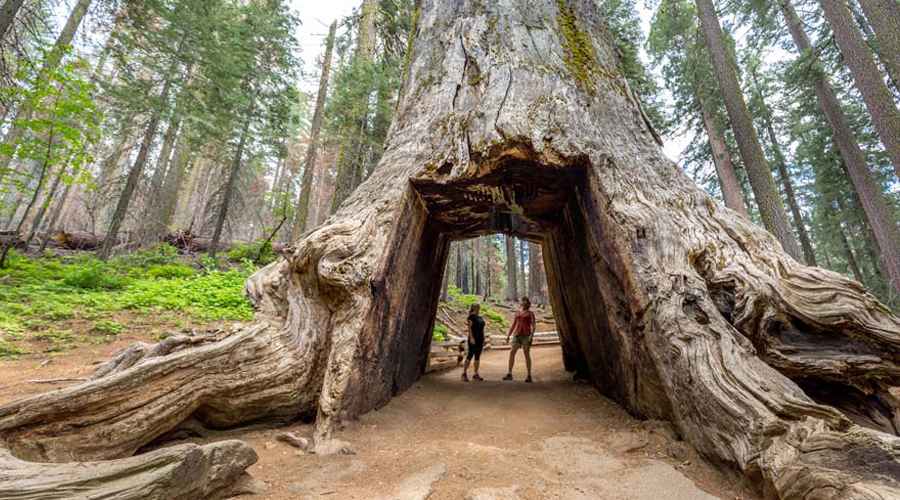When travelers plan a visit to California’s Sierra Nevada mountains, two legendary destinations often come to mind: Sequoia National Park and Yosemite National Park. Both are within a few hours of each other, both showcase the grandeur of nature in enormous proportions, and both stand as icons of the American national park system. But if you have limited time, the question naturally arises—which is better?
The answer depends on what you are looking for: towering granite cliffs or towering giant sequoias, glacially carved valleys or high alpine wilderness, iconic hiking trails or peaceful meadows. Let us look closely at both parks to help determine which might be the better choice for your adventure.
The Identity of Yosemite National Park
Yosemite National Park, established in 1890, is one of the most recognized natural landscapes in the world. With its dramatic granite cliffs, cascading waterfalls, and vast glacial valleys, Yosemite has become synonymous with the majesty of the American wilderness.
- Key Features: El Capitan, Half Dome, Yosemite Falls, and Yosemite Valley.
- Landscape: Dominated by iconic granite cliffs, alpine lakes, valleys, and high-country trails.
- Global Renown: A UNESCO World Heritage Site, immortalized by the photographs of Ansel Adams.
- Visitor Experience: Offers a blend of accessible scenic viewpoints (like Tunnel View) and challenging hikes (such as the trail up Half Dome).
Yosemite draws around 4 million visitors annually—a testament to its global appeal but also a reminder of the crowds you may encounter, especially in summer.
The Identity of Sequoia National Park
Adjacent to Kings Canyon National Park, Sequoia National Park is renowned primarily for its groves of giant sequoia trees—the largest living organisms on Earth. The park was created in 1890, making it the second-oldest national park in the United States.
- Key Features: General Sherman Tree, Giant Forest, Moro Rock, Crystal Cave.
- Landscape: Mixture of enormous tree groves, rugged mountains, lush foothills, and high-elevation wilderness.
- Unique Offering: Home to Mount Whitney, the highest peak in the contiguous United States at 14,505 feet.
- Visitor Experience: Feels more intimate and less crowded, offering more opportunities for peaceful solitude.
Unlike Yosemite, which dominates with granite cliffs and waterfalls, Sequoia defines itself with living giants that inspire awe in both their scale and longevity.
Comparing Natural Wonders
Yosemite’s Appeal lies in its breathtaking vistas, cliffs, and waterfalls. The glacially carved Yosemite Valley showcases heart-stopping views unlike anywhere else in the world. Standing on Glacier Point overlooking Half Dome or walking beneath Yosemite Falls offers an unmistakable thrill.
Sequoia’s Appeal is rooted in its natural giants. Walking among 3,000-year-old sequoias, some over 250 feet tall, is an experience that transcends scale and touches the imagination. Unlike granite cliffs, which impress the eye, these living organisms feel like an encounter with history itself.
- If you crave dramatic and photogenic landscapes, Yosemite wins.
- If you want a humbling and spiritual encounter with nature’s endurance, Sequoia wins.
Hiking Experience
Both parks attract hikers, but the challenges differ.
- Yosemite offers world-famous trails such as the Half Dome hike (requiring permits and stamina), the Mist Trail leading up to Vernal and Nevada Falls, and scenic alpine hikes into Tuolumne Meadows. It’s a hiker’s paradise, with diverse terrains from valley floors to high alpine lakes.
- Sequoia emphasizes wilderness experiences. Trails here can take you deep into sequoia groves or up to Moro Rock for sweeping views. For serious adventurers, climbing Mount Whitney via the Whitney Portal stands as one of the greatest hiking challenges in the U.S.
In short, Yosemite suits hikers looking for variety and iconic challenges, while Sequoia appeals to those seeking serene forest paths and alpine summits.
Wildlife Encounters
Both parks are habitats for black bears, mule deer, mountain lions, and countless bird species. However, the experience differs:
- At Yosemite, bear encounters and wildlife sightings are common in the valley, though the density of visitors sometimes overshadows the wilderness feel.
- In Sequoia, with its more remote and less crowded spaces, wildlife encounters may feel more genuine and wild.
Accessibility and Infrastructure
- Yosemite is easier to reach from San Francisco or Sacramento, making it the more popular choice for tourists exploring California. With developed shuttle systems, well-maintained facilities, and clear signage, it is visitor-friendly, though parking and crowding can be frustrating.
- Sequoia is slightly more remote, accessed via winding mountain roads. Its infrastructure is smaller and less commercialized, giving a rustic feel. Visitors who prefer quiet over convenience often find Sequoia more appealing.
Crowds and Atmosphere
Crowds play a crucial role in determining which park feels “better.”
- Yosemite in summer: Expect long lines, packed shuttles, and crowded viewpoints. The valley floor can feel more like a bustling tourist town than a wilderness escape during peak season.
- Sequoia in summer: Still busy, but quieter than Yosemite. You are far more likely to find a secluded trail and moments of silence beneath towering sequoias.
For solitude seekers, Sequoia offers a more intimate atmosphere.
Photographic Value
For photographers, the decision may be easier:
- Yosemite: Infinite dramatic photo opportunities, from golden hour on Half Dome to waterfalls at their spring peak. It’s a paradise for landscape photographers.
- Sequoia: Offers powerful, unique compositions that focus on the majesty of trees. Capturing the scale of sequoias is challenging but rewarding, producing photos unlike anywhere else.
So if building a portfolio of recognizable, dramatic shots is your goal, Yosemite dominates. If you want to capture the soul and spirit of natural giants, Sequoia shines.
Which Is Better for Families?
Families often look for easy access, moderate hikes, and engaging learning opportunities.
- Yosemite: Families love the valley floor, where short hikes lead to impressive waterfalls. Educational programs and well-maintained facilities make it kid-friendly, though crowds may be overwhelming.
- Sequoia: Kids are often amazed by the sheer size of the sequoia trees. Short walks like the General Sherman Trail or climbing Moro Rock provide adventure without too much difficulty. Sequoia’s calmer environment makes it easier for families with young children.
Seasonal Differences
- Yosemite: Spring is magical with waterfalls gushing at full force. Summer offers high-country hiking, though it’s crowded. Autumn brings stunning colors, and winter transforms the valley into a snowy wonderland.
- Sequoia: Accessible year-round, but winter brings significant snow, turning the park into a quiet, magical landscape. Summer allows access to sequoia groves and high trails, while spring and fall are relatively quiet with mild weather.
The Verdict: Which Is Better?
There is no universal answer; each park excels in different realms.
- Choose Yosemite National Park if you’re seeking epic landscapes, iconic photography, world-famous hikes, and a place that feels larger-than-life. It’s the right fit for first-time visitors, international travelers, and those who want to see “the landmarks.”
- Choose Sequoia National Park if you want a quieter, more contemplative experience, an encounter with giant trees that inspire awe, or a wilderness retreat that feels less commercialized. It’s ideal for those who want to reconnect with nature away from huge crowds.
For the most fulfilling adventure, many travelers combine both parks within a single trip. Yosemite delivers wonder through grandeur and drama, while Sequoia provides awe through scale and serenity. In truth, the two parks complement more than they compete.
So the real answer may not be which is better, but how to experience both—because seeing Half Dome and the General Sherman Tree in one trip is to witness two of nature’s greatest masterpieces side by side.


